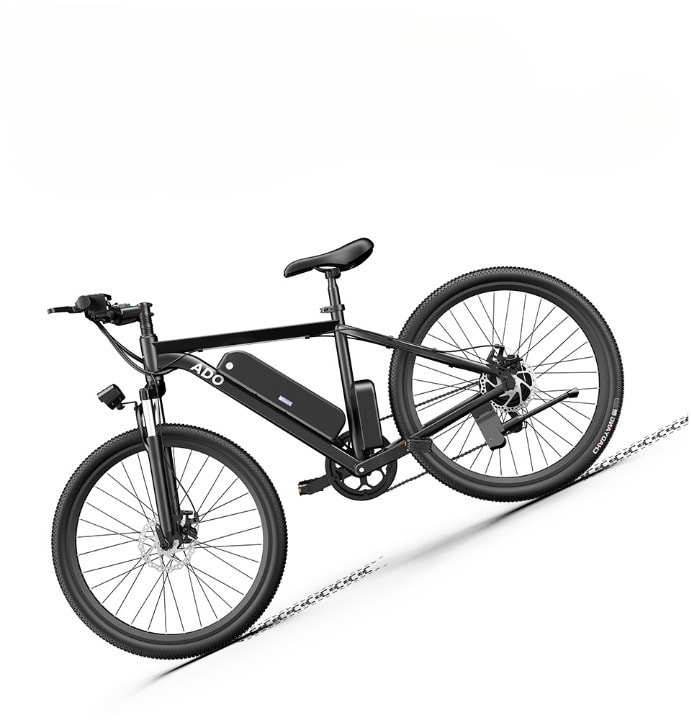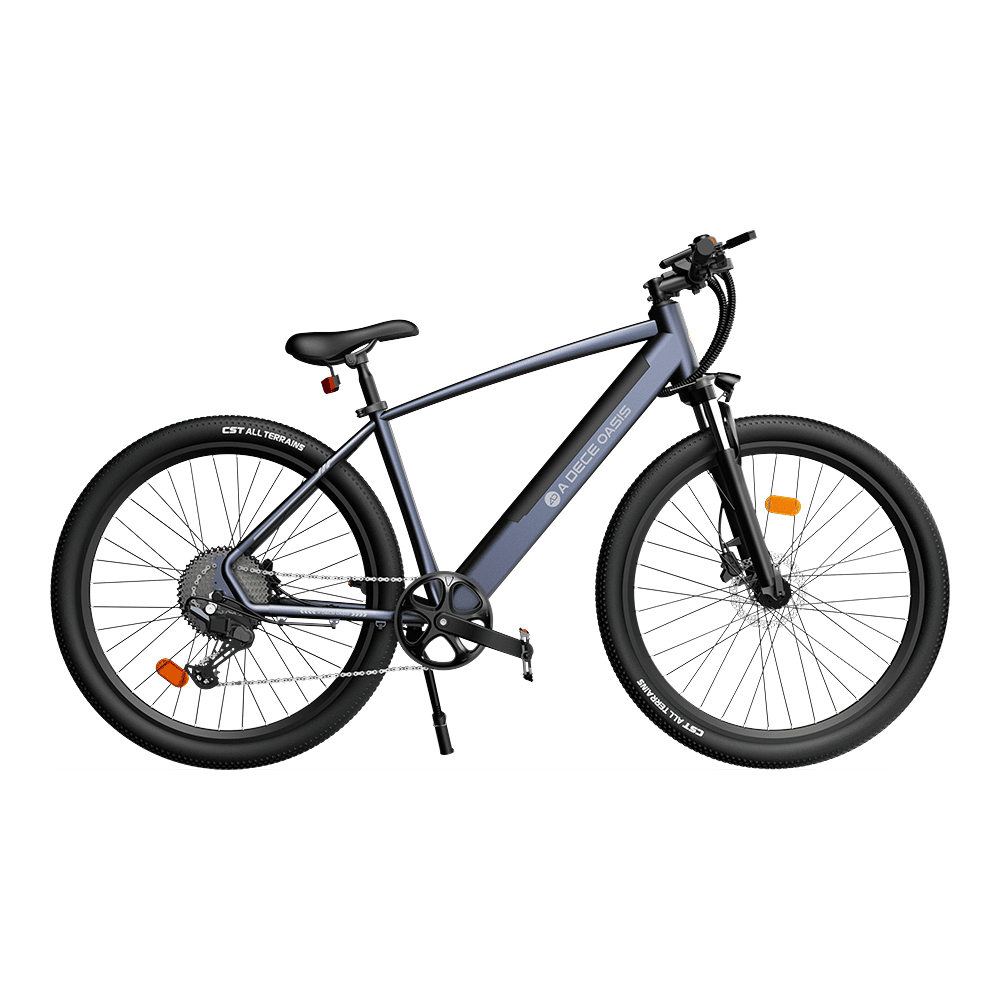What You Should Consider Before Buying An Electric Mountain Bike
Electric mountain bikes, also known as e-mountain bikes (eMTB), have become increasingly popular among riders who want to explore off-road trails with less physical effort.
These bikes are equipped with an electric motor that assists with pedaling, allowing riders to tackle steep climbs and challenging terrain with ease.
However, before you invest in an electric mountain bike, there are several factors you should consider to ensure that you choose the right bike for your needs and preferences.
In this regard, we’ll discuss some of the key considerations that can help you make an informed decision when buying an electric mountain bike.
What Is An Emtb?
An eMTB is short for “electric mountain bike”. It is a type lighter model of bicycle that has an electric motor and a battery that provides assistance to the rider while pedaling.
This makes it easier to tackle steep inclines and challenging terrain that would be difficult to navigate on a traditional mountain bike.
EMTBs come in different varieties, with varying levels of motor power, battery life, and assist modes. They are designed to be ridden on off-road trails, just like traditional mountain bikes, and can offer a fun and efficient way to explore the great outdoors.
What Types Of Emtbs Are There?
There are several types of eMTBs available on the market, each with its own unique features and capabilities. Some of the most common types of eMTBs include:
Hardtail eMTBs:
These bikes have a suspension fork at the front but no rear suspension. They are typically more affordable and lighter than full-suspension eMTBs, making them a popular choice for riders who want to focus on climbing.
Full-suspension eMTBs:
These bikes have both front and rear suspension, providing a more comfortable ride on technical terrain. They are generally more expensive and heavier than hardtail eMTBs but offer better performance on rough terrain.
Fat tire eMTBs:
These bikes have wider tires that provide greater stability and traction on loose or soft terrain like sand, snow, or mud. They are often used for trail riding, hunting, or fishing in areas with difficult terrain.
Trail eMTBs:
These bikes are designed for general-purpose trail riding, with a balance between uphill and downhill performance. They are typically more lightweight and versatile, with mid-range suspension systems that can handle a variety of terrains.
Enduro eMTBs:
These bikes are designed for aggressive riding on steep and technical descents. They have longer suspension travel and a more relaxed geometry, making them ideal for experienced riders who want to push their limits.
Downhill eMTBs:
These bikes are designed specifically for downhill riding on technical terrain. They have long-travel suspension and slack geometry that provides stability at high speeds.
Overall, the type of eMTB you choose will depend on your riding style, terrain, and personal preferences.
Key Terms That You Should Know Before Buying:
Motor
The motor is the component that provides the power to an electric mountain bike. It can be located in different parts of the bike leg power it, such as the front or rear wheel hub or the center of the frame (known as a front motor, front hub motor, mid drive motor or mid-drive motor).
The motor is typically powered by a battery and provides different levels of assistance to the rider, depending on the pedal assist system. The power output of the motor is measured in watts, and higher-wattage motors generally provide more power and assistance
Range
Range refers to the distance an electric mountain bike can travel on a single charge of its battery. It depends on various factors, such as the capacity of the battery, the power output of the motor, the weight of the rider, and the terrain. A higher capacity or battery power, can provide a longer range, while hilly or rough terrain can reduce the range. The battery range, is an important consideration when choosing an eMTB, especially if you plan to ride longer distances or tackle more challenging trails.
Battery
Electric mountain bikes (eMTBs) are powered by lithium-ion batteries that store the energy required to run the motor and provide assistance to the rider. The battery’s capacity is measured in watt-hours (Wh) and determines the maximum speed and amount of energy it can store. Larger batteries with more watt-hours can allow e mtb bikes and riders to travel further per charge, but they also add more weight to the e mtb bike itself.
When choosing an eMTB, it’s important to consider your riding style and preferences. If you plan on taking short rides of 1-2 hours, a smaller battery may be sufficient. However, if you’re looking to take long ride or embark on epic adventures, a larger battery may be necessary to cover more distance.
Weight
Weight is a crucial factor to consider when purchasing an eMTB. If you plan on transporting the bike to trails, a heavier bike can be more difficult to load onto a front bike rack, or into a vehicle.
Some bike manufacturers also are now creating lighter and less powerful models in order to achieve a better weight-to-power ratio. However, other brands argue that e-assist technology should result in a tougher and more durable bike, even if it is heavier.
The weight of the bike also affects the riding experience. A lighter bike will be more nimble and easy to maneuver on the trails, whereas a heavier bike will feel more solid and provide a better grip on the ground.
As eMTBs continue to improve, some brands are focusing on optimizing the bike’s geometry and balance to ensure it still feels like a traditional mountain bike, despite the added weight.
Pedal Assist
Pedal assist is a key feature of eMTBs’ dual battery system that differentiates them from other types of electric bikes. This system provides assistance to the rider while pedaling, making it easier to climb steep hills and ride longer distances.
There are different levels of assistance available, ranging from low to high, and some bikes even have a “turbo” mode for maximum power.
Pedal assist can be controlled through a handlebar-mounted display that shows the rider how much battery life is remaining, the bike paths current speed, and the level assisted speed of the bike shop the assistance being used.
Some eMTBs also have sensors that adjust pedal power to the assistance based on the terrain and the rider’s pedaling cadence.
Wheel size
EMTBs come in a variety of wheel sizes, including 26″, 27.5″, and 29″. The larger the wheel, the easier it is to roll over obstacles and maintain momentum, but the heavier and less agile the bike may feel.
Riding style:
It’s important to consider your preferred riding style when choosing an eMTB, as different models are designed for different types of riding. Trail bikes are best for all-around use, while enduro bikes are built for aggressive downhill riding.
Suspension:
Suspension is the system that helps absorb shock and improve ride quality. Most eMTBs have some form of suspension, either in the form of front suspension forks, rear suspension, or both.
How Much Should I Pay For A Good Emtb?
When it comes to buying an electric mountain bike, the price is a big factor. It’s important to consider how much you should pay for a good eMTB before making your purchase. Generally, you need to account for the cost of the battery, rear and front wheel, motor and other components like brakes, pedals and suspension. All these will affect the price tag.
You also want to think about what kind of motor and features you need in an eMTB. Rear wheel motors are often more powerful than front hub motors or hub drive motors with electric motors so they can provide more torque on steep trails. Battery life is another key consideration; some batteries may offer up to 500 charge cycles while others have fewer rechargeable times. If riding further distances or longer hours matter, then investing in a higher quality product with better specs can be beneficial in the long run.
Finally, research different e bikes and brands and compare prices between them before settling on one model. Read customer reviews online to get real feedback from people who have already purchased that particular item. This will help ensure that you’re getting value for money when purchasing an eMTB that suits your needs best without breaking the bank!
How Much Weight Did Emtb Hold
The good news is that EMT Bikes typically have higher load-carrying capacities than regular bicycles, so you don’t need to worry about them being too weak for additional weight.
Generally speaking, most modern electric Mountain Bike will be able to accommodate between 250-350 pounds extra weight on average. However, this number may vary depending on the type external batteries, hub motor, and model of e mountain bike that you choose.
What Is The Best Wheel Size?
There is no definitive “best” wheel size for an electric mountain bike, as it ultimately comes down to personal preference and riding style. The most common wheel sizes for eMTBs are 27.5 inches, 29 inches, and the less common 26 inches.
27.5-inch wheels are known on e mountain bikes mostly for their nimbleness and ability to handle technical terrain, while 29-inch wheels provide greater momentum and roll over obstacles and loose terrain more easily. The smaller 26-inch wheels are often found on older eMTB models and are generally less popular due to their lower efficiency and lack of stability on rough terrain.
Ultimately, the best bike and wheel size for you will depend on the type of riding you plan to do and your personal preferences. It’s always a good idea to test ride different wheel sizes and see which one feels the most comfortable and natural to you.
Last Words
Before you commit to a purchase, there are some important last words to consider. Testing out the bike is one of the most crucial steps in making sure you’re getting exactly what you need from your electric mountain bike.
A test ride will help determine if the size and weight of the frame material feel comfortable for long rides.
Additionally, it’s important to keep safety in mind when selecting an e-bike: make sure that brake levers provide good stopping power, check that shifting is smooth and gears don’t slip, and look into whether any additional features like lights or fenders come with the bike.
To get an even better idea of how a model works, research user reviews about their experiences with different models as well.
Check out all the Great reasons you should buy a electric bike in our article






